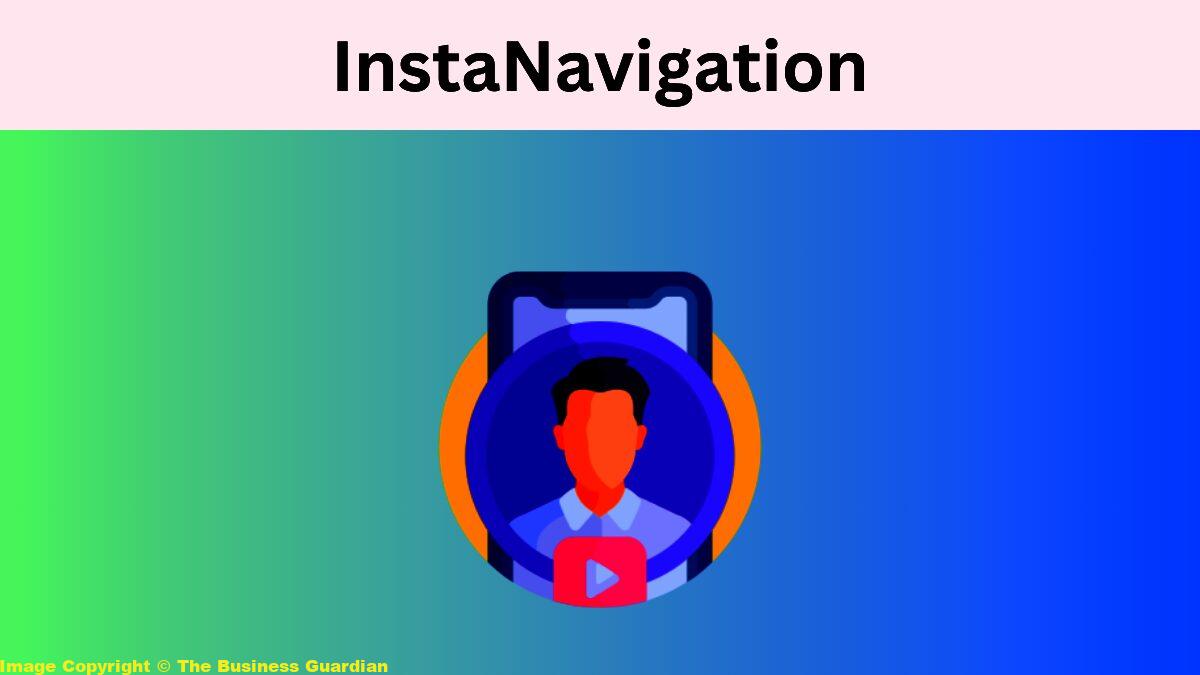n today’s ever-changing competitive business. Understanding the deep dive of QXEFV is no longer nice to have but a must-have in your arsenal. I have seen firsthand as a marketing professional and an entrepreneur who knows the business from both sides, and the power of this new age idea is changing how companies think about building customer experiences. Welcome to the exciting world of QXEFV.
What is QXEFV?
QXEFV is not only an acronym but a revolution in itself. That would be like a pulse checker for your product or service—it not only tells you it’s alive but also where the weak signals are. QXEFV goes beyond that. This is about measuring your user’s deep responses and then turning them into actual data. Why is this crucial? In a competitive market when consumers are looking for not just utility but experiences that linger on, QXEFV provides deep insight into how products resonate with users.
QXEFV Is a Key Business Strategy of the Futures Industry
1. Improving Product/Service Development
Adding a layer of data with QXEFV enables developers to see the full picture. It is not just about functionality; it also considers the emotional, functional, and sociocultural aspects of the design. This valuable insight allows businesses to craft their supply around the demand so that it fits neatly within user expectations and demands.
2. Improving the Experience
QXEVF lets organizations see the thoughts, feelings, and beliefs of users to help them understand the chasm between expectations and reality. It promotes self-awareness and depth within rather than relying on external objects for gratification.
3. Boost customer happiness and retention.
A high QXEFV score essentially means consumers hold a product or service in very high regard. This is crucial data for companies to use in developing targeted marketing programs and improving their image, helping them gain loyalty. Just think about holding the key to customer satisfaction and long-term relationships.

Image Copyright © The Business Guardian.
Decoding QXEFV: What Does It Mean?
- Quantitative Measurement: Unveiling the Heartbeat of the User Experience
QXEFV isn’t just an acronym; it’s a powerful lens through which we understand the intricate dance between users and technology. Let’s break it down:
- quantitative measurement
At its core, quantitative measurement emphasizes the need for data-driven insights. Imagine QXEFV as the heart rate monitor for your product or service. It doesn’t merely tell you that your creation is alive; it reveals how well it’s truly performing. Here’s why this matters:
- Beyond Positive or Negative Feedback: QXEFV transcends simplistic binary judgments. It dives deep into the experiential responses of users—those subtle heartbeats that pulse through interactions. By quantifying these responses, we gain a richer understanding of how products resonate with their audience.
- Holistic View: QXEFV considers emotional, functional, social, and cultural components. It’s not just about functionality; it’s about the symphony of user emotions and perceptions. Think of it as a multidimensional EKG for your creation.
- Experiential Value: Beyond Metrics, Into the Soul of Interaction
Experiential value is where QXEFV truly shines. It’s the subjective essence—the magic—that users derive from engaging with your product or service. Here’s why it matters:
- Beyond Traditional Metrics: Forget one-size-fits-all metrics. Experiential value captures the intangible—joy, frustration, surprise, and delight. It’s the thrill of a seamless app, the frustration of a clunky interface, or the warmth of personalized recommendations.
- User-Centric Lens: QXEFV shifts the spotlight from features to feelings. How does your creation make users feel? Is it an indispensable companion or a forgettable acquaintance? Experiential value answers these questions.

Image Copyright © The Business Guardian.
Benefits of QXEFV
Better customer insight:
- QXEFV helps companies understand if a product or service fulfills customer expectations, helping to close the gap between what is offered by the company and what customers expect from it.
- In other words, through the quantification of emotional (i) and functional (ii) social and cultural components2 or attributes3 of experiential value, businesses get to better understand consumer behavior.
- Such a comprehension helps businesses provide the customers with what they want that fulfills their necessities at its best, thereby gaining an exceptional customer experience.
Data-Driven Decision Making:
- QXEFV enables businesses to make informed decisions with quality data-based insights. The thing that lies above opinions and gut feelings.
- By reliably gauging how much experience is worth in business, companies can tailor product development cycles and strategies according to empirical data.
- QXEFV is to provide a roadmap based on the actual experiences of your end-users.
Better customer satisfaction:
- A high QXEFV score can be seen in strong customer satisfaction. Users who feel their lives have been improved by a product or its corresponding service will tend to turn into loyal supporters.
- They can then adapt the design before complaints come in and identify areas where the consumption experience was disconnecting from the user journey. QXEFV: They work to improve these improvements, whether by optimizing processes, enhancing features, or ensuring support.
Competitive Advantage:
- Differentiation is critical in a saturated marketplace. Since QXEFV, businesses can be unique, not just bold or assertive, by providing a superior user experience.
- While the competition might consider only features, focus on whether your offerings can also deliver an emotional payoff and overall value.
- It differentiates you from the rest at a higher level on QXEFV, thus making your brand memorable and appealing.

Image Copyright © The Business Guardian.
What Businesses GAIN: REAL-WORLD EXAMPLES OF QXEFV
Increased Sales:
- Applying the QXEFV technique properly could drive sales up. If the users understand more value, they will tend to buy again and bring others to your product.
- Take Apple, for instance—users love the product because of how hardware and software come together in a single package with design, leading to great experiences following sales that drive loyalty.
Improved brand loyalty:
- Brands such as Amazon and Netflix get into their customers’ minds so well. With personalized recommendations, a user-friendly interface, and transparent services, many of these platforms have built up trust over time, which has resulted in brand loyalty.
- This regular delivery of value is what builds long-term customer relationships with these companies.
Higher Pricing Power:
- Users will pay a premium when they see value in the product. This is why brands like Rolex and Tesla have gone from strength to strength, the latter having disrupted a well-established market by using QXEFV as a unique selling point.
- This can be difficult to wrap your head around, but customers would expect nothing less from those brands when forked out for them.
Market Differentiation:
- Unlike the hotel industry before it, Airbnb went after experiential value. Its platform connects travelers with one-of-a-kind accommodations, offering a more memorable travel experience than standard hotels.
- Airbnb stood out by focusing on the user experience and leveraging that to make a name for itself.

Image Copyright © The Business Guardian.
Measuring QXEFV: Strategies and Tools
- User Surveys and Feedback:
- Method: Collect qualitative data by directly asking users about their emotional responses, perceived benefits, and overall experience.
- Importance: User surveys provide valuable insights into the emotional and functional aspects of experiential value. They allow businesses to understand user preferences and identify areas for improvement.
- User Behavior Analytics:
- Method: Analyze user interactions with your product or service. Track behavior patterns, such as time spent, navigation paths, and feature usage.
- Importance: Behavior analytics reveal how users engage with your offering. By understanding their actions, you can optimize features and enhance the overall experience.
- A/B Testing:
- Method: Compare different design elements or features by creating variations (A and B) and measuring user responses.
- Importance: A/B testing helps identify which elements resonate better with users. It provides quantitative data on what drives positive experiences.
- Social Media Sentiment Analysis:
- Method: Monitor social media platforms to gauge customer sentiment related to your brand and product.
- Importance: Social media sentiment analysis captures real-time reactions. It reveals emotional value and helps address any negative sentiments promptly.
Relevant measurement tools and metrics:
- Net Promoter Score (NPS): Measures customer loyalty by asking how likely users are to recommend your product or service to others.
- Customer Effort Score (CES): Assesses the ease of using your product or service. Lower effort correlates with better experiential value.
Holistic View: Combining Quantitative and Qualitative Data
- QXEFV is not just about numbers; it’s about understanding the complete user experience. By combining quantitative metrics with qualitative insights, businesses gain a holistic view.
- Remember, experiential value is multifaceted—emotional, functional, social, and cultural. Quantitative data alone won’t capture its richness.

Image Copyright © The Business Guardian.
Practical Tips for Implementing QXEFV
- Define Your Customer Journeys: Map Out Touchpoints
- Customer Journeys: Begin by understanding the paths users take when interacting with your brand. Identify touchpoints across various channels—website, app, social media, customer support, and more.
- Mapping Touchpoints: Create a visual map that outlines each touchpoint. Consider both prepurchase and postpurchase interactions. This map will serve as your guide to capturing experiential value at every stage.
- Identify key user experience metrics: Align with business goals
- Metrics Selection: Choose specific metrics that align with your business objectives. These could include:
- Net Promoter Score (NPS): Measures customer loyalty and willingness to recommend your brand.
- Customer Satisfaction Score (CSAT): gauges overall satisfaction after specific interactions.
- Task Success Rate: Measures how well users accomplish tasks within your product or service.
- Time on Task: Evaluates efficiency and ease of use.
- Emotional metrics: Consider sentiment analysis or emotional engagement metrics.
- Customize Metrics: Tailor these metrics to your unique context and industry.
- Gather Data Consistently: Regularly Collect User Experience Data
- Surveys and Feedback: Conduct regular user surveys to capture qualitative insights. Ask about emotions, pain points, and delight moments.
- Behavioral Analytics: Continuously monitor user behavior. Track clicks, navigation paths, and interactions. Tools like Google Analytics or Mixpanel can help.
- Heatmaps and Session Recordings: Visualize user interactions to identify patterns and pain points.
- Social Listening: Monitor social media conversations related to your brand. What are users saying? How do they feel?
- Analyze and interpret data: uncover insights
- Quantitative Analysis: Crunch the numbers. Look for trends, correlations, and anomalies. Identify areas where experiential value shines or falls short.
- Qualitative Insights: Dive into survey responses, user comments, and feedback. Understand the “why” behind the data.
- Segmentation: Analyze data by user segments (e.g., new vs. returning customers, different demographics). Examine differences in experiential value.
- Take Action: Improve and Tailor Strategies
- Iterate: Use insights from QXEFV to iterate on your product or service. Fix pain points, enhance delightful moments, and optimize touchpoints.
- Prioritize: Focus on areas that have the most impact. Address critical issues first.
- Collaborate: Involve cross-functional teams—designers, developers, marketers, and customer support. QXEFV is a team effort.
- Feedback Loop: Continuously gather feedback and measure improvements. Adjust your strategies based on real-world results.
Remember, QXEFV isn’t a one-time task—it’s an ongoing journey. By integrating it into your business processes, you’ll create experiences that resonate with users and drive long-term success. 🌟
Conclusion:
In today’s fast-paced business environment, where customer expectations evolve rapidly, QXEFV emerges as a guiding star. Let’s recap its importance:
- Customer-Centricity: QXEFV places users at the heart of decision-making. It’s not just about features; it’s about how those features resonate with real people. By understanding experiential value, businesses can create products and services that truly matter.
- Holistic Insights: QXEFV combines quantitative data (metrics, analytics) with qualitative insights (user feedback, emotions). It’s the yin and yang—the left brain and right brain—working together to decode the intricate dance of user experiences.
Limitations and Cautionary Notes
While QXEFV holds immense promise, we must tread carefully.
- Biased Data Collection: Remember that data collection methods can introduce biases. Not everyone participates in surveys, and behavior analytics may miss subtle emotional cues. Be aware of these limitations.
- Context Matters: experiential value varies across contexts. What delights one user may frustrate another. Consider cultural nuances, demographics, and individual preferences.
Explore the possibilities.
So, during your QXEFV journey, you learn more, grow up adapting, and hope it goes well. Get deeper into the realm of user experience. Review case studies, attend webinars, and connect with your peers. Let me step up as a business together.
Stay Connected
Subscribe to our newsletter for more marketing wisdom. We will provide information about new marketing trends, strategies, and success stories. Let us together unlock the entire potential of QXEFV and deliver a great experience to our customers.
Thank you for joining us on this enlightening voyage. Until next time, may your QXEFV scores soar and your customers smile!







































